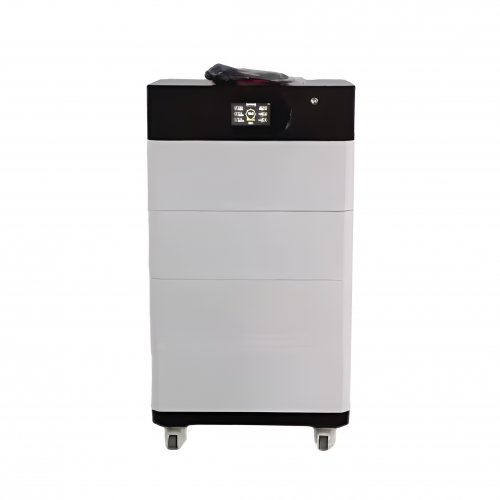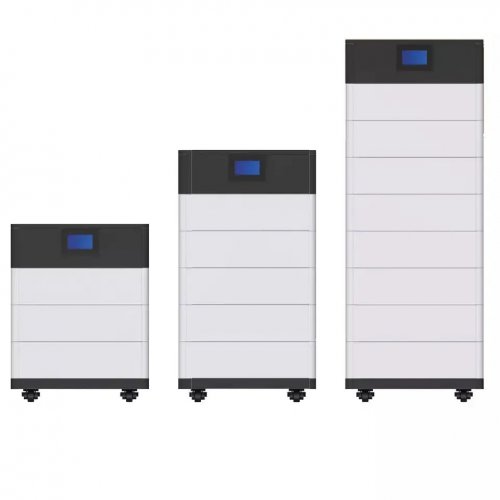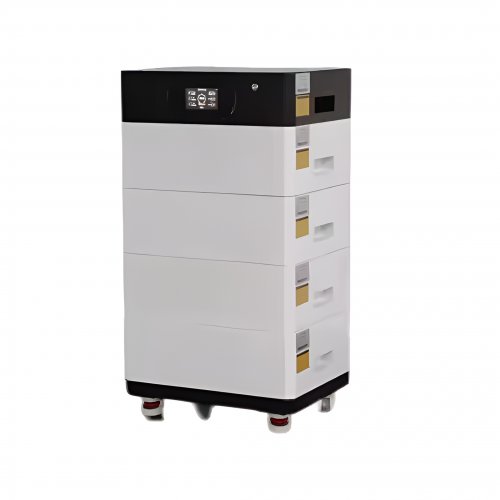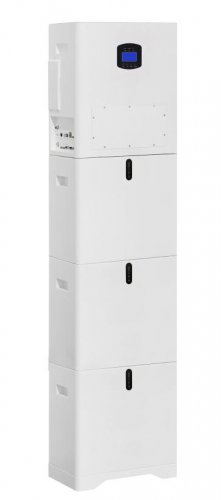Advances In Rate Capability: Unlocking The Dynamics Of Fast Energy Storage
The relentless pursuit of faster energy storage and delivery has positioned rate capability as a cornerstone metric in electrochemical research. It defines a device's ability to maintain capacity under high current densities or rapid charge/discharge cycles, a critical parameter for applications ranging from electric vehicles requiring rapid acceleration to grid storage needing to buffer intermittent renewable sources. Recent years have witnessed significant breakthroughs in understanding and enhancing rate capability, moving beyond traditional material discovery to a more holistic approach that integrates novel materials, sophisticated nanostructuring, and profound insights into interfacial ion dynamics.
The Fundamental Bottleneck: Ionic and Electronic Transport
The limitation of rate capability primarily stems from kinetic constraints: sluggish ionic diffusion within the electrode bulk and across electrode-electrolyte interfaces, and inadequate electronic conductivity. Traditional electrode materials, like micron-sized graphite anodes or lithium cobalt oxide cathodes, suffer from long solid-state diffusion paths for ions, leading to severe polarization and capacity loss at high rates. The foundational work of Bruce, Scrosati, and others highlighted these challenges in early lithium-ion batteries, establishing the intrinsic material properties as a key limiting factor.
Recent Material and Structural Innovations
The most prominent strategy to overcome these hurdles has been nanotechnology. By reducing the diffusion path length to the nanoscale, Li+ ions can traverse the active material particles much more rapidly. For instance, the development of two-dimensional (2D) materials like MXenes has been revolutionary. Their high electronic conductivity, hydrophilic surfaces facilitating ion access, and tunable interlayer spacing have made them exceptional high-rate electrode materials. Gogotsi and colleagues have demonstrated Ti3C2Tx MXene electrodes achieving capacitance retention of over 90% at scan rates exceeding 1 V s⁻¹, a performance unmatched by conventional carbons.
Beyond new chemistries, sophisticated morphological engineering has emerged. The design of hierarchical structures, which combine macro-, meso-, and micro-pores, addresses transport at all length scales. Macropores serve as ion-buffering reservoirs, mesopores facilitate rapid ion transport, and micropores provide high surface area for charge storage. A notable example is the work on 3D graphene aerogels with vertically aligned channels, which act as expressways for ion diffusion, drastically reducing the tortuosity of the electrode. This architectural control, as advanced by groups like Cui's at Stanford, directly minimizes the ionic resistance within the electrode matrix.
Furthermore, surface functionalization and defect engineering have proven highly effective. Introducing oxygen vacancies in metal oxides like TiO2 or WO3 significantly enhances their electronic conductivity and creates more active sites for ion insertion. Similarly, nitrogen-doping in carbon materials alters the electron distribution, improving wettability and electronic conductivity, thereby boosting charge transfer kinetics at the interface.
Beyond the Electrode: The Electrolyte and Interface
A critical recent realization is that the electrode material itself is only part of the equation. The transport of ions in the electrolyte within the porous electrode and across the solid-electrolyte interphase (SEI) is equally crucial. Research has increasingly focused on optimizing electrolyte chemistry for fast kinetics. Concentrated "water-in-salt" electrolytes, for instance, widen the electrochemical stability window of aqueous systems while simultaneously modifying the ion solvation structure, leading to lower desolvation energy barriers and faster interfacial charge transfer.
The understanding and engineering of the SEI and cathode-electrolyte interphase (CEI) have also seen paradigm shifts. The goal is to create thin, homogeneous, and ionically conductive yet electronically insulating interphases. The use of electrolyte additives like fluoroethylene carbonate (FEC) is well-known, but newer research explores artificial SEI layers. For example, a study published inNature Energyby Li et al. demonstrated an ultra-thin, uniform, and lithium-ion conductive artificial SEI composed of lithium polyacrylate, which enabled stable cycling of lithium metal anodes at exceptionally high current densities.
The Pivotal Role of Advanced Characterization and Modeling
Breakthroughs in operando and in situ characterization techniques have been instrumental in these advances. Tools like in situ transmission electron microscopy (TEM), X-ray diffraction (XRD), and Raman spectroscopy allow researchers to observe material structural changes and ion transport in real-time under operating conditions. This has unveiled previously hidden mechanisms, such as phase transformation pathways during fast (de)insertion and the dynamic evolution of the electrode-electrolyte interface.
Complementing this, multi-scale computational modeling, from density functional theory (DFT) calculating energy barriers for ion hopping to continuum models simulating ion flux in full cells, has transitioned from explanation to prediction. Machine learning algorithms are now being deployed to screen millions of potential material compositions and architectures for optimal rate performance, accelerating the discovery process exponentially.
Future Outlook and Challenges
The future of rate capability enhancement lies in the convergence of these interdisciplinary strategies. The next frontier is the precise and scalable fabrication of optimized 3D electrode architectures with minimal tortuosity and maximal active site accessibility. The development of solid-state batteries presents a new set of rate capability challenges centered on the solid-solid interface, demanding innovations in composite solid electrolytes and interface engineering to ensure intimate contact and fast ion conduction.
Furthermore, the quest for extreme fast charging (XFC) in lithium-ion batteries (e.g., <15 minutes for 80% charge) highlights the need to solve the problem of lithium plating on anodes, a severe safety hazard exacerbated at high rates. Solutions will likely involve synergistic anode surface modifications, advanced thermal management, and smart charging algorithms informed by real-time diagnostics.
In conclusion, the field of rate capability has evolved from a mere materials property to a complex, system-level performance indicator. Progress is no longer driven by serendipity but by a fundamental understanding of iono-electronics and deliberate design across multiple scales. As we continue to unravel the intricate dance of ions and electrons at ever-higher speeds, the horizon of what is possible for electrochemical energy storage continues to expand, promising a future where power and energy are no longer a trade-off.
References
1. Gogotsi, Y. & Penner, R. M. Energy Storage in MXenes.ACS Nano12, 2081-2083 (2018). 2. Lukatskaya, M. R. et al. Ultra-high-rate pseudocapacitive energy storage in two-dimensional transition metal carbides.Nat. Energy2, 17105 (2017). 3. Kang, B. & Ceder, G. Battery materials for ultrafast charging and discharging.Nature458, 190–193 (2009).
4. Li, N. W. et al. A flexible solid electrolyte interphase layer for long-life lithium metal anodes.Nat. Energy3, 22–29 (2018).
5. Suo, L. et al. "Water-in-salt" electrolyte enables high-voltage aqueous lithium-ion chemistries.Science350, 938–943 (2015).
Customized/OEM/ODM Service
HomSolar Supports Lifepo4 battery pack customization/OEM/ODM service, welcome to contact us and tell us your needs.


HomSolar: Your One-stop LiFePO4 Battery Pack & ESS Solution Manufacturer
Our line of LiFePO4 (LFP) batteries offer a solution to demanding applications that require a lighter weight, longer life, and higher capacity battery. Features include advanced battery management systems (BMS), Bluetooth® communication and active intelligent monitoring.

Customised Lithium Iron Phosphate Battery Casing
ABS plastic housing, aluminium housing, stainless steel housing and iron housing are available, and can also be designed and customised according to your needs.

HomSolar Smart BMS
Intelligent Battery Management System for HomSolar Energy Storage System. Bluetooth, temperature sensor, LCD display, CAN interface, UART interface also available.


Terminals & Plugs Can Be Customized
A wide range of terminals and plugs can be customised to suit the application needs of your battery products.

Well-designed Solutions for Energy Storage Systems
We will design the perfect energy storage system solution according to your needs, so that you can easily solve the specific industry applications of battery products.



About Our Battery Cells
Our energy storage system products use brand new grade A LiFePO4 cells with a battery lifespan of more than 4,000 charge/discharge cycles.



Applications in Different Industries
We supply customized & OEM battery pack, assemble cells with wiring, fuse and plastic cover, all the cell wires connected to PCB plug or built BMS.
Applications: E-bike, Electric Scooter, Golf Carts, RV, Electric Wheelchair, Electric Tools, Robot Cleaner, Robot Sweeper, Solar Energy Storage System, Emergency Light, Solar Power Light, Medical Equipment, UPS Backup Power Supply.
We can provide you with customized services. We have the ability to provide a vertical supply chain, from single cells to pack/module and to a complete power solution with BMS, etc.


HomSolar (Shenzhen) Technology Co., Ltd
























